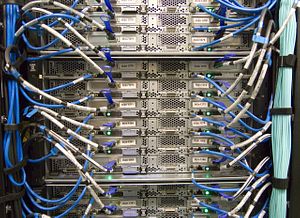Moheshkhali is a small island located along the southeast tip of Bangladesh. It is home to 320,000 people and is one of the nation’s densest, poorest, and most remote areas, underserved by doctors with well below the country’s average literacy rate.
Moheshkhali is also the nation’s first “Digital Island,” a path-breaking example of the ways in which Bangladesh is bringing 21st-century services and dreams to its citizens as part of its broader Digital Bangladesh initiative.
Moheshkhali is now connected to the mainland by 14 miles of fiber optic cable. Schools are linked to the internet for the first time, finally giving many children a chance to see the outside world. Thanks to high-speed web video, students on the island can interact with teachers on the mainland in real time.
Healthcare has also improved. The Digital Island project introduced handheld ultrasonic devices to four community clinics — with more to follow. These will allow doctors at hospitals in bigger cities such as Dhaka and Chittagong to examine and diagnose patients remotely.
Moheshkhali has long been renowned for its fisheries and salt-making, but the island’s would-be entrepreneurs had few options to get their products to market on the mainland. As part of the Digital Island initiative, the government has set up an e-commerce center on the island at which anglers, traders and farmers can get the information they need to connect with buyers.
Moheshkhali also will soon be home to a seaport and several power plants. Through online resources, island residents can learn the necessary skills to get the good-paying jobs that are coming and that will elevate the island’s economy.
“Moheshkhali was a treasure, be we couldn’t properly utilize it” because of its isolation, said Bangladesh Prime Minister Sheikh Hasina. She promised that the success of the Digital Island initiative will be replicated on other remote islands that dot the country’s Bay of Bengal coastline.
The Digital Island of Moheshkhali is only one of the many ways the government is seeking to implement its Digital Bangladesh vision.
Digital Bangladesh is leveraging digital tools and know-how to deliver government services to the country’s 163 million residents. The government has built 5,000 Digital Centers that provide internet and other information technology services to citizens, enough so that no village is more than 2.5 miles away from one.
A Teacher’s Portal, with more than 220,000 teachers participating, is an online tool that allows experienced teachers to train less-experienced ones remotely, thereby improving the quality of education.
Pushing this digital revolution forward is Bangladesh’s impending rollout of its nationwide 4G network, which will provide the faster, more reliable internet coverage.
This comes at a time when Bangladeshis are rushing online and going mobile at amazing rates. In 2012, 31 million citizens had internet subscriptions. Today, 80 million – or half the country’s population – do. Total mobile phone subscriptions stand at 145 million, or nearly the entire country, up from 87 million in 2012. This will help smooth the government’s plan to transition to a cash-free, digital-payment economy long before more developed countries have achieved the feat.
Because of this concerted digital push, Oxford University’s Internet Institute discovered something remarkable last year: Bangladesh is the world’s second-largest supplier of online labor for companies around the globe, trailing only India. Work includes software development, sales and marketing support and creation of multimedia content.
And for the children on Moheshkhali Island, all of this innovation means one additional thing: school is a lot more fun.
Sajeeb Wazed is the chief information technology adviser for Bangladesh and the son of the prime minister.

































